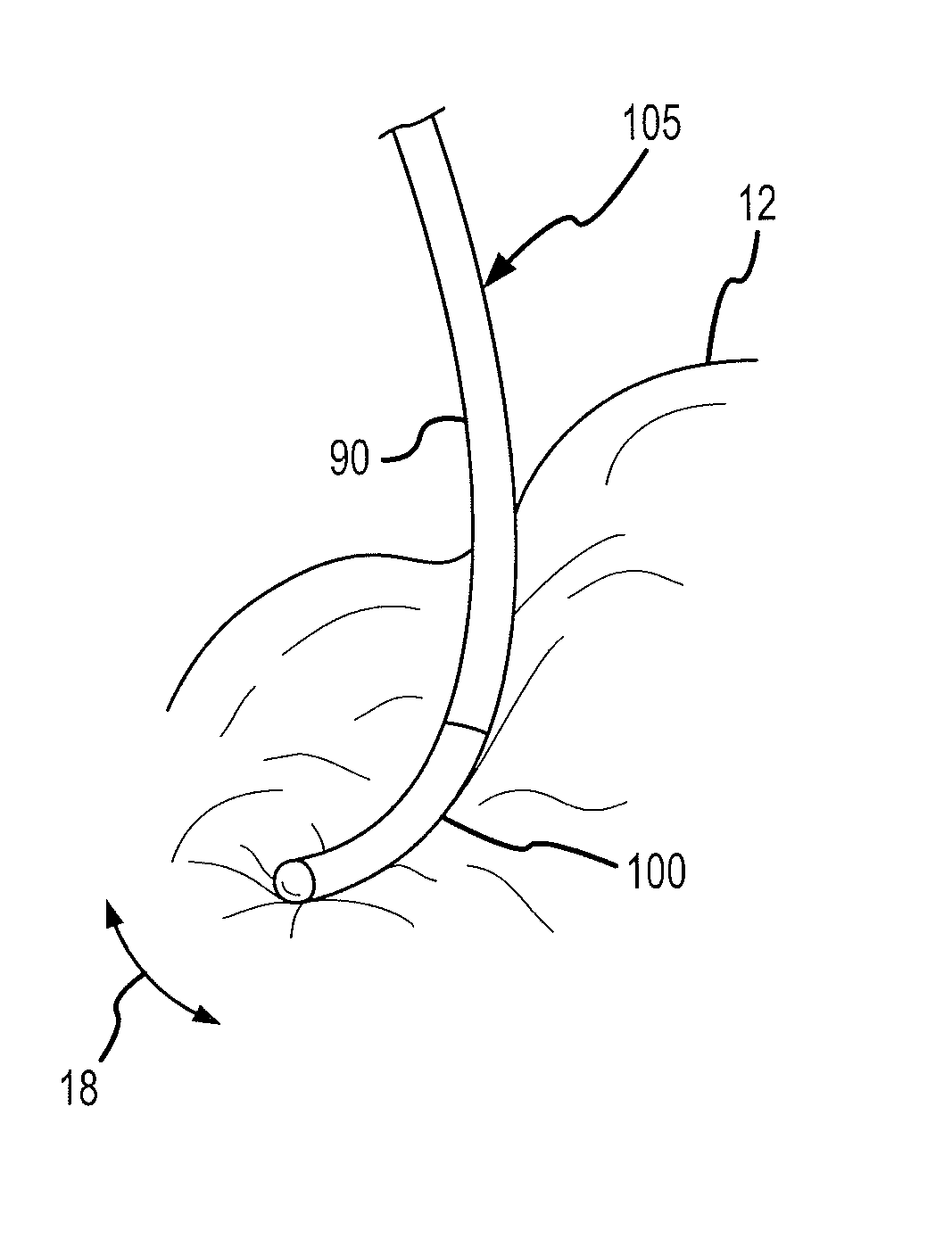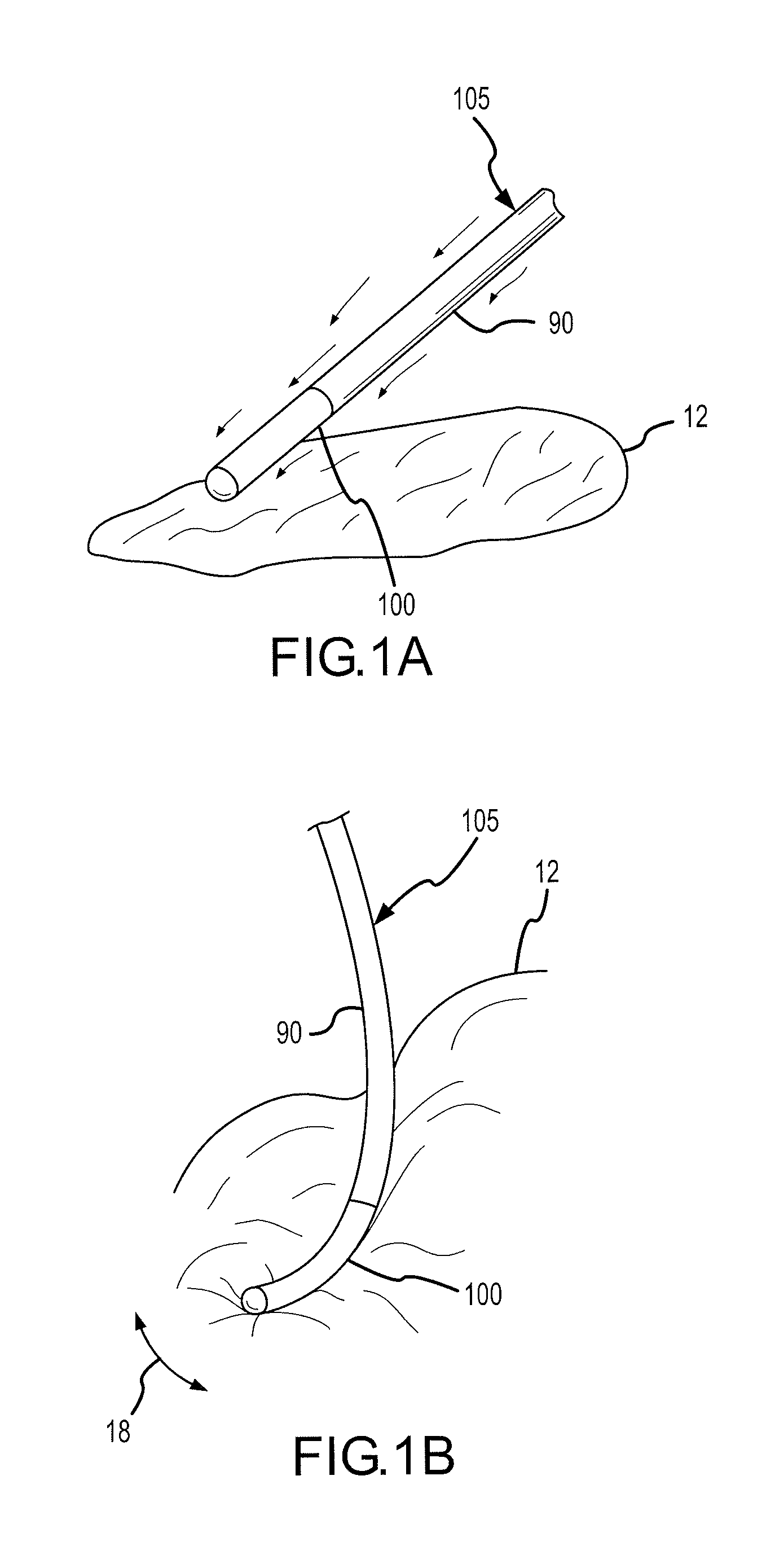Ablation electrodes with capacitive sensors for resolving magnitude and direction of forces imparted to a distal portion of a cardiac catheter
- Summary
- Abstract
- Description
- Claims
- Application Information
AI Technical Summary
Benefits of technology
Problems solved by technology
Method used
Image
Examples
Embodiment Construction
[0043]An ablation electrode having at least one tactile sensor is disclosed, together with a method of using and a method of manufacturing the ablation electrode. The present invention utilizes tactile sensors of three basic types: pressure PSCC sensors; capacitance sensors; and piezoelectric sensors.
[0044]As noted hereinabove, when used in this application, the terms “pressure sensitive conductive composite” (and the acronym “PSCC”) are used to indicate a pressure sensitive conductive composite that has unique electrical properties as follows: the electrical resistance of the PSCC varies inversely in proportion to the pressure that is applied to the PSCC. The PSCC material that is most useful with the present invention has a high electrical resistance when not under stress (that is, in a quiescent state), and yet the same PSCC material starts to become conductive under pressure, and indeed, the electrical resistance may fall to less than one ohm (1Ω) when under sufficient pressure....
PUM
 Login to View More
Login to View More Abstract
Description
Claims
Application Information
 Login to View More
Login to View More - R&D
- Intellectual Property
- Life Sciences
- Materials
- Tech Scout
- Unparalleled Data Quality
- Higher Quality Content
- 60% Fewer Hallucinations
Browse by: Latest US Patents, China's latest patents, Technical Efficacy Thesaurus, Application Domain, Technology Topic, Popular Technical Reports.
© 2025 PatSnap. All rights reserved.Legal|Privacy policy|Modern Slavery Act Transparency Statement|Sitemap|About US| Contact US: help@patsnap.com



